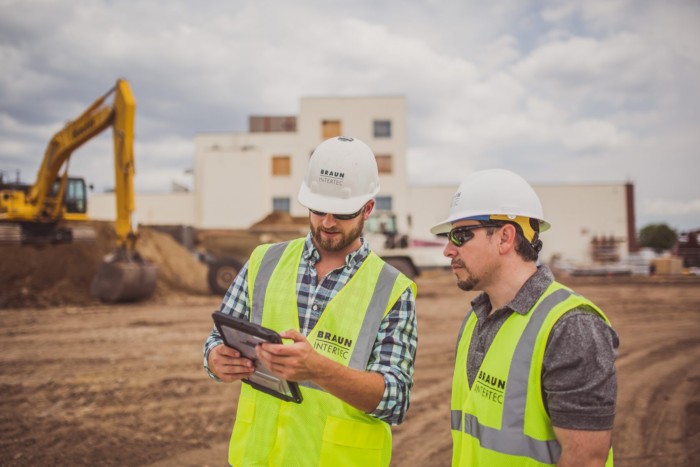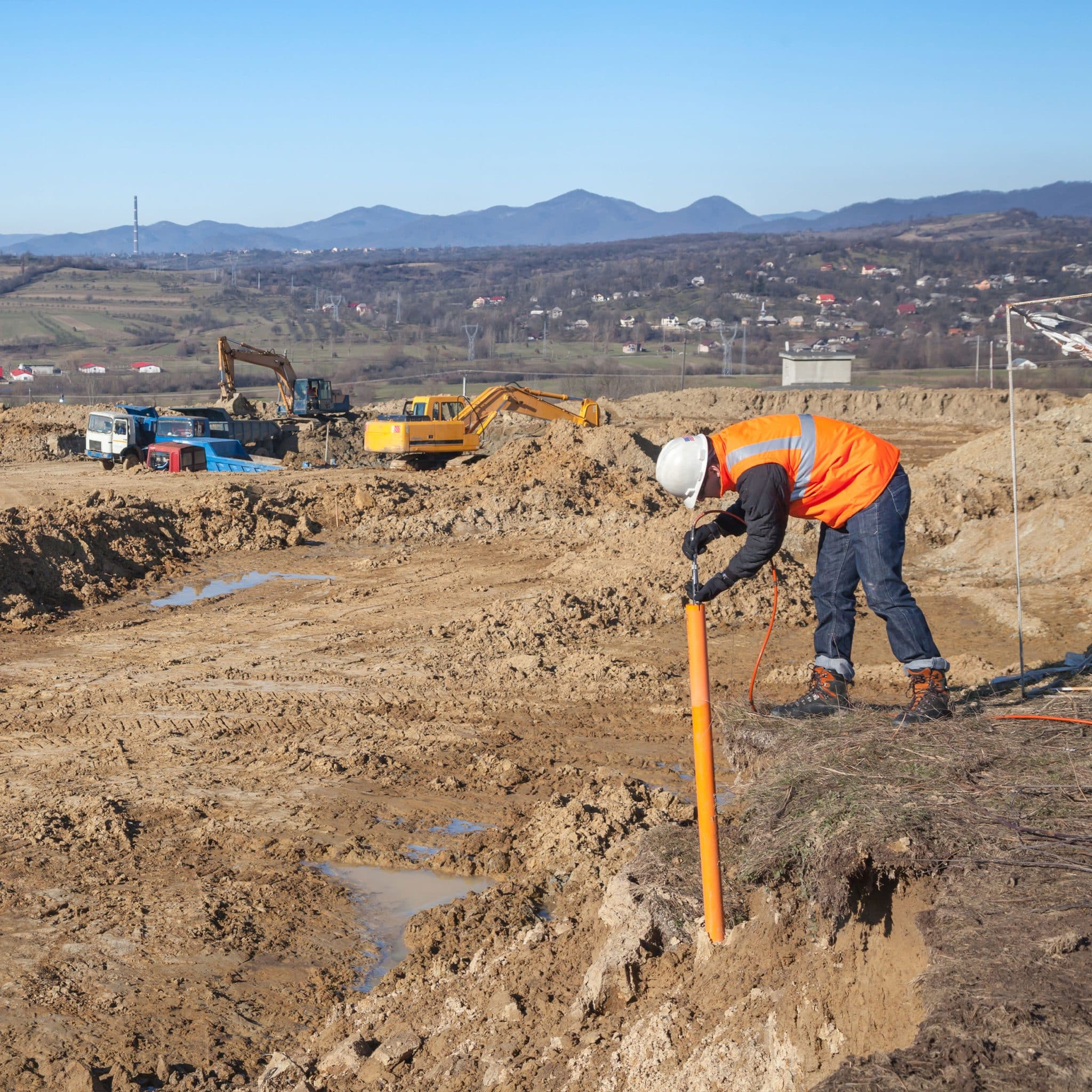Why Working With a Geo Tech Engineer is Important for Facility Building Tasks
Why Working With a Geo Tech Engineer is Important for Facility Building Tasks
Blog Article
Discovering the Ingenious Strategies and Technologies Shaping the Future of the Geotechnical Industry for Sustainable Engineering Solutions
The geotechnical market is undertaking a transformative shift, driven by innovative methods and innovations that stress sustainable design solutions. Advanced dirt stablizing methods, the use of wise products, and the application of information analytics are redefining how we come close to infrastructure difficulties. As these developments promote eco-friendly stewardship, they also raise important concerns about their functional implementation and lasting efficiency. Recognizing the interplay in between these developments and their prospective to revolutionize the field invites further exploration right into the future of sustainable design practices.
Advanced Soil Stabilization Methods
Dirt stabilization is a critical process in geotechnical engineering, targeted at enhancing the physical buildings of dirt to boost its load-bearing ability and resilience. Advanced dirt stablizing strategies play a crucial function in attending to difficulties connected with unstable or weak dirts, therefore making it possible for safe and efficient construction practices.
Amongst the prominent methods, chemical stabilization involves using additives such as lime, cement, or fly ash, which respond with dirt fragments to develop a more natural mass. This strategy is specifically effective in enhancing the toughness and moisture resistance of expansive clay dirts. Mechanical stablizing, on the various other hand, entails the physical change of dirt homes via compaction or the incorporation of granular materials, resulting in improved density and security.
Another ingenious approach is using geosynthetics, which give reinforcement and decrease dirt erosion while enhancing water drainage. Strategies like soil mixing and deep dirt stablizing are also gaining traction, enabling in-situ therapy of bothersome soils. Jointly, these advanced approaches not only enhance the efficiency of soil frameworks however likewise add to sustainable engineering techniques by lessening the demand for considerable excavation and product transport.
Smart Products in Geotechnics
Technology goes to the center of geotechnical design, especially with the unification of wise products that enhance the efficiency and functionality of soil structures. Smart products, such as form memory alloys, piezoelectric materials, and self-healing polymers, are changing the way engineers come close to soil stabilization and framework longevity (consulting engineer). These materials can adjust to transforming ecological problems, react to stress, and even fix themselves, considerably boosting the durability of geotechnical systems
For circumstances, piezoelectric materials can create electric costs in action to mechanical tension, using potential for real-time surveillance of soil problems and architectural stability. Similarly, self-healing materials can autonomously fix problems and splits, decreasing upkeep expenses and extending the lifespan of geotechnical possessions. The combination of these clever materials not only boosts the mechanical residential or commercial properties of soil but additionally adds to sustainable engineering techniques by minimizing resource usage and environmental impact.
As the geotechnical market remains to advance, the adoption of wise products will certainly play a critical duty in establishing innovative services, making sure that frameworks are not only robust however additionally adaptable to future difficulties. This transformative technique is poised to redefine the standards of safety and efficiency in geotechnical engineering.
Information Analytics for Facilities
The integration of wise materials in geotechnical design has paved the method for innovative methods, especially in the realm of data analytics for infrastructure. This cutting-edge technique leverages considerable information collection and logical techniques to boost decision-making processes throughout the infrastructure lifecycle. By utilizing sensors embedded in wise products, designers can constantly monitor crucial criteria such as dirt security, More Help dampness levels, and architectural honesty.
Information analytics enables the transformation of raw data into workable insights, enabling anticipating upkeep and enhanced threat monitoring. Advanced formulas and equipment discovering techniques help with the identification of anomalies and patterns, which can enhance and inform prompt treatments source allowance. Furthermore, integrating geographic info systems Visit Your URL (GIS) enhances spatial analysis, further improving the decision-making structure.
As framework tasks grow in intricacy, the dependence on information analytics ends up being progressively vital. It cultivates an aggressive technique, decreasing the chance of failings and guaranteeing the long life and sustainability of frameworks. By harnessing the power of data analytics, the geotechnical market is positioned to not just improve present methods yet additionally leader ingenious solutions for future infrastructure difficulties. This harmony of technology and design concepts will certainly define the future of sustainable framework advancement.

Lasting Ground Renovation Approaches
Different sustainable ground renovation techniques are becoming essential services to resolve the challenges of geotechnical design while decreasing ecological influence. These approaches not only improve dirt efficiency yet likewise promote eco-friendly stewardship by decreasing reliance on traditional, much more intrusive strategies.

One more innovative technique is the application of geosynthetics, which includes biodegradable materials that enhance dirt while promoting drainage and disintegration control - geo tech engineer. This decreases the requirement for heavy machinery and minimizes website disturbance, therefore preserving local ecological communities
Furthermore, techniques such as vibrant compaction and vibro-replacement have actually progressed to consist of lasting techniques, decreasing and incorporating recycled materials carbon footprints. These approaches exhibit the sector's shift towards more eco liable remedies, guaranteeing that ground renovation not only meets engineering requirements yet likewise contributes positively to the surrounding setting.
Developments in Ecological Surveillance
In recent years, developments in environmental tracking have dramatically boosted the ability to assess and manage geotechnical tasks with very little environmental interruption. Ingenious technologies, such as remote picking up, Net of Points (IoT) gadgets, and real-time data analytics, are changing just how ecological influences are gauged and alleviated.
Remote noticing technologies, including satellite imagery and airborne LiDAR, facilitate the rapid assessment of land usage changes and environmental conditions - geotechnical engineers. These devices enable for continual monitoring of websites, enabling designers to identify prospective problems prior to they escalate. Additionally, IoT tools, outfitted with sensors for specifications like soil temperature, wetness, and gas emissions, provide live information streams that enhance the understanding of site-specific ecological variables
Real-time data analytics additionally fine-tune decision-making processes by integrating data from numerous resources, allowing for positive monitoring strategies. This all natural approach not only guarantees conformity with environmental regulations but additionally promotes sustainable methods within the geotechnical market.
As these innovations remain to develop, they hold the prospective site here to link the gap between engineering purposes and ecological stewardship, cultivating a much more lasting future for geotechnical jobs worldwide.
Final Thought
Advanced soil stabilization techniques, the combination of wise products, and the application of information analytics jointly improve the resilience and performance of framework. These developments not only address contemporary design obstacles yet also pave the means for a much more lasting future in geotechnical practices.
Techniques like soil blending and deep soil stabilization are also acquiring traction, allowing for in-situ treatment of bothersome soils. Collectively, these innovative methods not just enhance the efficiency of soil frameworks yet also add to sustainable engineering practices by reducing the need for considerable excavation and product transport.

Report this page